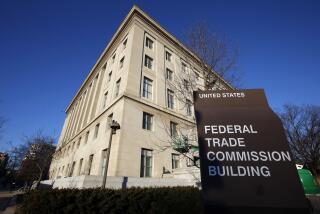U.S. exchanges want tighter circuit breakers
- Share via
The U.S. securities regulator is considering a plan that would improve a 23-year-old circuit breaker that did not trip during last year’s “flash crash” to make it more sensitive to extreme market moves.
Exchanges pitched a long-awaited plan that would lower percentage thresholds for halting stock trading, shorten the halts and change the reference index to the broader Standard & Poor’s 500 from the current Dow Jones industrial average, the U.S. Securities and Exchange Commission said on Tuesday.
The government regulator could formally adopt the changes after a 21-day public comment period.
The new breakers, designed to pause trading in all exchange-listed securities throughout U.S. markets, are the latest in a long line of responses to the May 6, 2010, crash, which revealed deep flaws in market structure, spooked investors and embarrassed exchanges and regulators.
The market-wide breakers, adopted in 1988, did not stop the nearly 700-point crash in the Dow because their trigger thresholds were so broad. While futures exchanges quickly shut things down that day, stock-trading at the Nasdaq and elsewhere spiraled downward in a jarring few minutes.
Nasdaq OMX Group Inc, NYSE Euronext and other exchange operators, as well as the Financial Industry Regulatory Authority, proposed tightening the thresholds to 7%, 13% and 20% lower than the previous day’s close, from the current 10%, 20% and 30%, the SEC said.
Plunges after 6:30 a.m. and until 12:25 p.m. Pacific time that set off the halts will pause trading for 15 minutes, NYSE’s proposal said. The exchanges would scrap the current system of halts of different durations based on what time the drop takes place. A 20% decline, whenever it occurs, would stop trading for the rest of the day.
More to Read
Inside the business of entertainment
The Wide Shot brings you news, analysis and insights on everything from streaming wars to production — and what it all means for the future.
You may occasionally receive promotional content from the Los Angeles Times.










